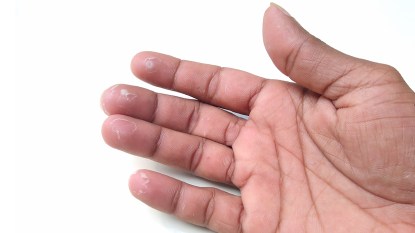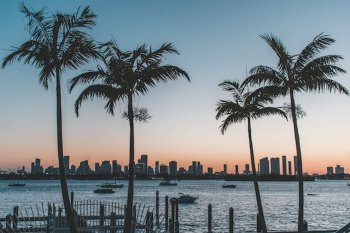Is Rainwater Safe to Drink? Not Anymore, New Study Finds
No more singing in the rain.

Next time you or your kids want to run outside in a rainstorm and stick out their tongues for a taste of natural refreshment, think better of it. According to new research, rainwater almost everywhere on earth has been officially declared not safe to drink due to levels of forever chemicals.
“Forever chemicals” are human-made (meaning they don’t occur in nature). Per- and poly-fluoroalkyl substances (PFAS) are called forever chemicals because they don’t break down in the environment. This means they’re here until the end of time — and there’s nowhere you can be free of them. Traces of PFAS have even been found in certain types of makeup.
According to the National Institutes of Health, these chemicals last so long in the environment that their half-life cannot be determined; though one study found that 97 percent of Americans have measurable levels of PFAS in their blood. Experts say the most common way to be exposed to PFAS is through drinking water.
The Research
Researchers at the University of Stockholm have found forever chemicals in the rainwater of almost every location on the planet, including the remote snowy continent of Antarctica. These chemicals have non-stick or stain repellent properties, and can be found in household items like food packaging, electronics, cosmetics, and cookware.
Over the last two decades, these chemicals have been declared more dangerous to us than originally suspected, which is why the limit for what’s considered safe exposure has dropped significantly. “There has been an astounding decline in guideline values for PFAS in drinking water in the last 20 years,” confirms Ian Cousins, lead author of the study and a professor at Stockholm University.
As an example, the water guideline values for PFOA (perfluorooctanoic acid), a known carcinogen (a.k.a. substance capable of causing cancer), have declined by 37.5 million times in the US. “Based on the latest US guidelines for PFOA in drinking water, rainwater everywhere would be judged unsafe to drink,” says Cousins. “Although in the industrial world we don’t often drink rainwater, many people around the world expect it to be safe to drink and it supplies many of our drinking water sources.”
The Health Risks
While some scientists say the health risks associated with exposure to these chemicals could include fertility problems, increased risk of cancer, and developmental delays in children, others say that no direct cause and effect can be proven between forever chemicals and poor health.
According to the Center for Disease Control and Prevention (CDC), “human health effects from exposure to low environmental levels of PFAS are uncertain. Studies of laboratory animals given large amounts of PFAS indicate that some PFAS may affect growth and development. In addition, these animal studies indicate PFAS may affect reproduction, thyroid function, the immune system, and injure the liver.”
Despite the lack of conclusive evidence, some officials are calling for tighter restrictions on PFAS — in fact, studies like this one often renew calls for updated PFAS limits. “It cannot be that some few benefit economically while polluting the drinking water for millions of others, and causing serious health problems,” Dr. Jane Muncke, managing director of the Food Packing Foundation in Zurich, told Euro News. (She was not involved in the study.) “The vast amounts that it will cost to reduce PFAS in drinking water to levels that are safe, based on current scientific understanding, need to be paid by the industry producing and using these toxic chemicals.”
While collected rainwater has in the past been an option for drinking — in theory, it is water in its purest form — what falls from the sky is now unsafe to ingest. So next time you feel inclined to sing in the rain, please don’t — and tell your kids not to open their mouths!













